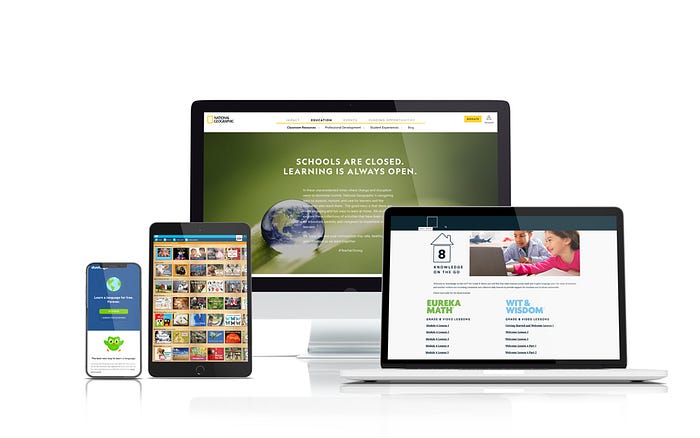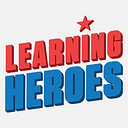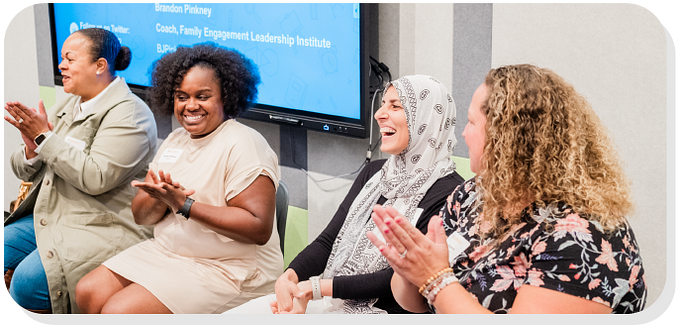Quarantined Mom: Week 2
Learning Heroes continues to hand-pick top resources for parents looking for high quality, free independent learning
By Cindi Williams
In what was otherwise an incredibly somber week in the Seattle area, moms in my community found levity and solidarity in the sharing of their favorite quarantine memes. This was mine:

Not surprising, moms are banding together. They are sharing words of encouragement (“your roots look fine on Zoom”), tips on making homelife fun (glow in the dark ping pong balls), and online learning resources that are working and not working. In my school district, online “school” started on Monday. It is two classes a day (and one on Friday) on Microsoft Teams with their teacher along with homework assignments. I am grateful that our school was already equipped with devices and I now have two hours a day — from 9:00 am to 11:00 am where I know he is engaged in learning. Hooray. However, two hours a day is NOT enough and this week we are listening to TED talks — TED Connect is hosting daily experts at noon — in addition to tapping into the list below.
I know some of you are drowning in lists at this point. However, I have been told by a number of moms that they are plowing through the resources we shared last week, and so we are eager to share more options. (Click here to see last week’s blog.) We are also keeping an eye out for resources geared toward moms with students who have special needs. I have listed a resource below and will continue to search.
Our team is going through the avalanche of stuff that is being circulated online and pulling out only those tools that meet our standard — free, rigorous, easy to navigate, and lend themselves to independent learning (so that moms get a break!).
Learning Heroes has also curated many of the resources we have highlighted these past two weeks in one tool called “Keep Calm, Learning is On.” Once you select a grade level, this site will organize some of the most engaging resources from multiple sites into daily projects, activities and videos. There are also tips on organizing the day, how to meet your child’s emotional needs, and much more.


Big Ideas Math:
When you click on this link, it will pull up a list of math textbooks used in states and districts across the US. If your child does not see the picture of his or her book, you can click on “Common Core 2019” and use curriculum widely accepted in over 40 states. This is digital “old school” in that you will pull up, page by page, instruction, quizzes and tests. For high school, they offer Algebra 1, Algebra 2, and Geometry. Also, there is a parent button in the top right-hand corner that gives you access to flashcards, “skills review,” and games to help reinforce each lesson.

National Geographic:
NatGeo continues to add to their “Learning At Home” Resource Library. They have sorted their curriculum by K-2, 3–5, and 6–12. The middle and high school units are focused on issues important to this generation — global water supply, endangered animals, adaptations in the arctic and more. There are so many options so students can choose something they are passionate about.

Great Minds:
This website puts three highly regarded curriculum on one site and each lesson is “taught” by a master teacher in the corner of the screen. It is perfect for independent learning time. You will see Eureka Math for K-12, Wit and Wisdom (ELA) for K-8 and PHD Science for grades 3–5. Eureka Math is the most widely used math curriculum in the US and they allow students to work all the way up to pre-calculus. Right now, there are 4–5 lessons in each grade but their goal is to continue to add more while school closures continue.

EdNavigator:
“One Great Thing” is really a handful of great things. It is a daily list of tips, activities and resources to help you make each day a little different. Yesterday’s tips included cosmic yoga videos, a recipe for frozen treats, a question to discuss at dinnertime (favorite magic spell?) and more. This is a great resource for days when you feel like your creativity is running out.

Unite for Literacy:
This digital library has a wide range of audio books for young readers written and narrated in various languages. The “pencil” image in the top left-hand corner of the site shows users which books are written in English or Spanish. To the right of the pencil, users can click the image of a “world” and find all 43 languages available for narration while reading. This interactive website also provides students with turn-page visuals to keep them engaged.

NYC Department of Education “Learn at Home” Materials:
You don’t have to be a family or student from New York City to use these resources, but you do need a home printer. There is a ton of learning that can be done on this site if you are willing to put in some work. However, it is denser than the other options and a little bit harder to navigate.
After choosing your child’s appropriate grade level and desired subject, you will gain access to weeks of day-to-day lessons and activities in the form of printable packets. Subjects range from math, ELA, science, social studies, and physical education. Each packet offers suggested daily schedules, guides and materials for instruction, recommended educational television shows, and links to a variety of books and magazines. It is available in English, Spanish, French, Mandarin, and Arabic.

Duolingo:
This is an incredibly easy way to study a language. You can choose from 30 languages. After choosing your native language, the language you would like to learn, and the purpose for learning it (travel, fun, etc.), the website takes students through a “gamified” course of activities. Students will experience personalized, adaptive instruction (based on answers to various questions) and will be exposed to commonly used phrases, interactive stories, and podcasts to immerse them in the new language. Ongoing tests throughout each course will help track and monitor student’s progress as they go through each course. I was blown away with this site and will be using it for basic vocabulary before all future travel.

NYC Department of Education “Specialized Instruction and Student Supports”:
We have seen a number of stories across the US this week from parents of special needs students looking for help and resources. I can relate. My oldest son has special needs and was the beneficiary of extraordinary teachers and aides throughout his public-school life. He is 21 now and no longer in high school, but I cannot imagine being solely responsible for his learning. This Instruction Sheet is specifically designed for students with an IEP who are experiencing challenges as a result of the change in their child’s routine. Resources include practical things like a “calm down” checklist, breathing exercises, places to find assistive technology, as well as occupational, physical, and speech therapy supports.

Cindi Williams is co-founder of Learning Heroes, a Principal at HCM Strategists, and a former senior official at the US Department of Education, the White House, and the Bill and Melinda Gates Foundation. She resides in the Seattle area with her husband and two boys.










